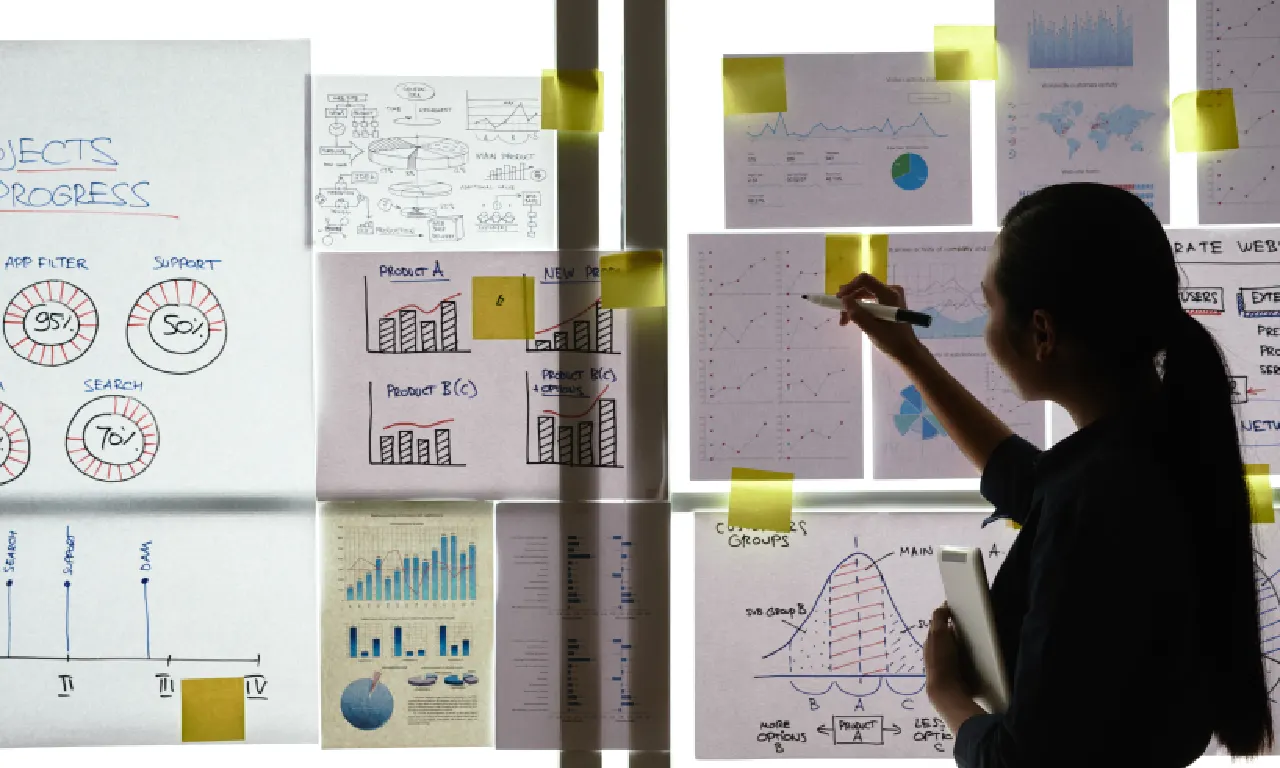Complete Guide to Lean Manufacturing: Principles, Techniques and Implementation

Walk into any manufacturing plant today, and you'll likely witness a frustrating reality. Materials sitting idle for weeks. Machines waiting for parts. Workers scrambling to fix quality issues that could have been prevented. Meanwhile, your competitors are somehow delivering faster, cheaper, and with fewer defects. What's their secret?
The answer isn't cutting corners or squeezing workers harder. Instead, it lies in a revolutionary approach that transforms how you think about production itself. Lean manufacturing is a proven methodology that's helped companies from Toyota to Maruti Suzuki achieve extraordinary results.
So what is the lean manufacturing definition, and how do you determine if lean manufacturing is right for your operation? And more importantly, how do you implement it without disrupting your current production?
This comprehensive guide will answer these questions and more.
What is lean manufacturing?
At its core, the lean manufacturing definition is that it is a systematic approach designed to reduce cycle and response times by eliminating non-value-adding work throughout the production process.
Originally rooted in the Toyota Production System (TPS), this management philosophy combines proven methods with a fundamental shift in thinking about waste and efficiency.
But here's where many people get it wrong - lean manufacturing isn't just about implementing tools and techniques. True "lean" represents both a comprehensive management philosophy and a specific set of methods that work together to accelerate speed while reducing costs.
The foundation rests on two core pillars borrowed directly from TPS: Just-in-Time (JIT) production and Jidoka (automation with human intelligence).
These concepts emerged from post-war Toyota's necessity to maximise efficiency with limited resources, eventually evolving into the lean manufacturing system we recognise today.
Explore how the 8 wastes of lean manufacturing often slow businesses down.
What are the benefits of lean manufacturing for businesses?
Modern plants implementing comprehensive lean manufacturing techniques achieve remarkable improvements across multiple dimensions.
When it comes to logistics and warehousing, the numbers speak for themselves. Companies extending lean principles beyond production floors typically see 20-50% warehouse cost savings[1] and up to 40% reductions in transport costs.
But the real transformation happens when manufacturers combine traditional lean manufacturing with Industry 4.0 technologies.
The NIST framework provides additional clarity on why manufacturers are prioritising lean initiatives now:
- Productivity gains that directly impact profitability and market competitiveness
- Shorter lead times enabling faster response to customer demands and market changes
- Reduced inventory levels freeing up working capital for strategic investments
- Accelerated quality resolution minimising costly defects and rework cycles
Each of these outcomes addresses critical challenges facing Indian manufacturers today. With the government's Production-Linked Incentive (PLI) scheme driving manufacturing growth across 14 sectors, companies implementing lean manufacturing processes are better positioned to capture these opportunities.
These improvements mirror the efficiency seen in startups when applying business risk vs financial risk assessments to operations.
The 5 main lean manufacturing principles
The foundation of successful lean manufacturing rests on five interconnected principles that guide every decision and action within your operation.
1. Value starts with understanding exactly what your customers consider valuable. Rather than assuming you know what matters, define value in precise, customer-specific terms.
For example, instead of general promises like "quality products," specify measurable outcomes: "48-hour delivery for SKU X with zero defects." This clarity guides every subsequent decision about resource allocation and process design.
2. Value Stream mapping requires you to document every step involved in producing one specific product family from raw materials to customer delivery.
Using standard Value Stream Mapping (VSM) icons, identify which activities actually add value versus those that represent waste or waiting.
3. Flow focuses on eliminating anything that blocks continuous movement through your production process. The key insight here is that traditional batch-and-queue thinking creates artificial supply-chain bottlenecks.
Pay particular attention to changeover times - reducing setup durations from hours to minutes can dramatically improve flow without requiring major capital investments.
4. Pull systems ensure you produce only what customers actually demand, when they demand it. This prevents the overproduction waste that often destroys manufacturing economics, especially in industries with volatile demand.
5. Perfection establishes the rhythm of continuous improvement through Plan-Do-Check-Act (PDCA) cycles and standardised leader work. Implement quarterly VSM refresh sessions to ensure your lean manufacturing system evolves with changing business conditions.
Together, these five lean principles create a self-reinforcing system where improvements in one area enable progress in others. The companies that struggle with lean manufacturing implementation typically try to implement tools without understanding these underlying principles.
What is 5S in lean manufacturing meaning?
When executives ask where to begin their lean manufacturing journey, the answer is almost always 5S. This foundational methodology provides immediate visual results while building the discipline necessary for more advanced lean manufacturing techniques.
The 5S framework follows a specific sequence, and each step builds capability for the next, creating a systematic approach to workplace organisation that supports all other lean initiatives.
1. Sort involves ruthlessly eliminating anything that doesn't directly support current production requirements. Use red-tagging to identify questionable items and remove them to a designated holding area. If nobody claims these items within 30 days, dispose of them permanently.
2. Set in order establishes designated locations for everything that remains after sorting. Create visual controls like shadow boards for tools, floor markings for equipment positions, and clearly labelled storage areas. The goal is to ensure that anyone can find what they need within 30 seconds.
3. Shine goes beyond basic cleaning to establish inspection routines that identify problems before they impact production. When operators clean their equipment daily, they notice loose bolts, leaks, and other early warning signs that prevent bigger failures.
4. Standardise creates consistent methods across all work areas so improvements become permanent rather than temporary fixes. Document best practices and ensure everyone follows the same procedures for maintaining the first three S's.
5. Sustain builds the long-term discipline necessary for continuous improvement. Implement daily 5-minute team meetings to discuss workplace conditions and monthly audits to ensure standards remain consistent.
The visual impact of 5S creates immediate buy-in from skeptical employees while establishing the foundation for more sophisticated lean manufacturing tools like Just-in-Time and continuous flow production.
Lean manufacturing process: An implementation roadmap
Successful lean manufacturing implementation requires a systematic approach that builds capability while delivering measurable results. This roadmap emphasises starting with one product line before scaling across your entire operation.
Phase 0 - Assess (1-2 weeks)
Begin by selecting one product family that represents typical production challenges without being your most complex or critical line.
Establish baseline measurements for Cycle Time, Lead Time, Work-in-Process (WIP), Overall Equipment Effectiveness (OEE), and First Pass Yield (FPY).
Create a current-state Value Stream Map that documents every step from raw material receipt to customer delivery. This assessment phase provides the factual foundation for all subsequent improvement activities.
Phase 1 - Stabilise (2-4 weeks)
Focus on fundamental stability before attempting flow improvements. Implement 5S workplace organisation, establish standard work procedures, and install basic visual management systems.
Target quick wins that demonstrate immediate value while building employee confidence in the lean manufacturing process. Measure improvements weekly and celebrate progress to maintain momentum during this critical foundation-building phase.
Phase 2 - Flow & Pull (4-8 weeks)
With stable processes established, begin balancing your production line to Takt time - the rhythm of customer demand. Reduce changeover times using Single-Minute Exchange of Die (SMED) techniques, allowing smaller batch sizes and more responsive production.
Right-size Kanban systems to enable pull-based production without excess inventory. This phase transforms your operation from push-based to demand-driven production.
Phase 3 - Scale & Sustain (ongoing)
Establish daily Gemba walks where leaders observe actual conditions and support problem-solving at the source. Implement tiered meetings that connect shop floor issues with management decision-making.
Use Plan-Do-Check-Act (PDCA) cycles for continuous improvement and refresh your Value Stream Map quarterly to identify new improvement opportunities. This phase builds the management system necessary for long-term success.
Summing up on lean manufacturing
The evidence is overwhelming: companies implementing comprehensive lean manufacturing programs consistently outperform their traditional counterparts across productivity, quality, and financial metrics.
Companies that master lean manufacturing techniques are positioned to capture disproportionate benefits in this expanding market. The combination of traditional lean methodologies with Industry 4.0 technologies offers even greater potential for breakthrough performance.
At GrowthJockey - a full stack venture builder, we've helped manufacturing clients across India implement comprehensive lean manufacturing systems that deliver measurable results. Through our proven "Diagnose, Design, Build" methodology, we ensure that lean transformations are tailored to your specific challenges while leveraging global best practices.
Whether you're beginning your lean journey or seeking to accelerate existing initiatives, the right approach can transform your operations and competitive position.
FAQs on lean manufacturing
Q1. What are the 4 P's of lean manufacturing?
The 4 P's are Philosophy (long-term thinking), Process (eliminating waste), People & Partners (respect and development), and Problem Solving (continuous improvement through root cause analysis).
Q2. What are the 5 M's of lean manufacturing?
The 5 M's represent common sources of waste: Man (labour inefficiencies), Machine (equipment problems), Material (inventory excess), Method (process issues), and Measurement (data inaccuracies).
Q3. What are lean tools?
Key lean manufacturing tools include 5S workplace organisation, Value Stream Mapping, Kanban pull systems, Kaizen continuous improvement, Poka-yoke error prevention, and Single-Minute Exchange of Die (SMED) for setup reduction.
Q4. What is meant by lean manufacturing?
Lean manufacturing is a systematic methodology focused on eliminating waste while maximising customer value through continuous improvement, just-in-time production, and employee empowerment.
Q5. What are the 4 Ps of Kaizen?
Kaizen's 4 Ps are Plan (identify improvement opportunities), Do (implement changes), Check (measure results), and Act (standardise successful improvements and continue the cycle).








